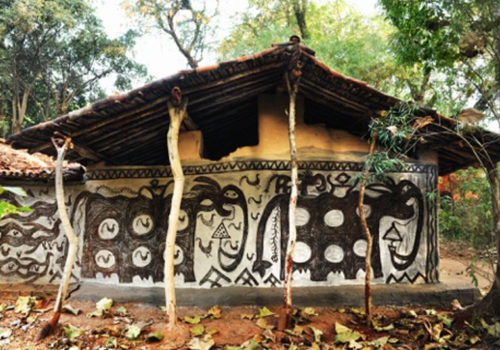A multimillenial tradition is in the process of gradually fading away into general indifference. The tradition of walls painted by the women of the tribes of Hazaribagh,in the North-Eastern region of India whose name signifies “a thousand gardens”.
Tirelessly, monsoon after monsoon, the women repainted walls of village houses, with natural pigments worked extensively before being applied. This tradition dates back to the rock age. The colorful scenes were made for celebrations after the harvest (Sohrai style). Those in black and white were reserved for marriages (Khovar style).
The expansion of gold and coal mines created a real ecological catastrophe, threatening village territories and feeding zones as well as bringing new house-building methods using brick and cinderblock instead of earth. It’s more and more difficult for the inhabitants to get what they need to support themselves and continue this ancestral tradition.
In 2009, photographer Deidi von Schaewen found these painted houses and met Bulu Imam, these women advocate of their civilization in India. After her second trip in 2014, she noticed that more than half of the paintings had disappeared. She then decided to help by creating the “Women of Hazaribagh” association. The funds raised are meant to let these female artists relaunch and continue the tradition of painted houses by buying pigments and materials and by compensating these artists.
Deidi von Schaewen, Femmes peintres du Hazaribagh
Through November 27, 2016
ENSA Paris-Malaquais, Espace Callot
1 rue Jacques Callot
75006 Paris
France
















